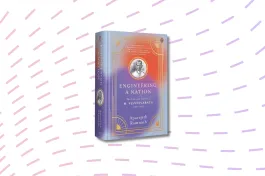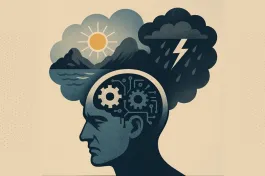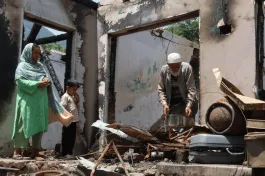The pandemic due to the coronavirus SARS- Cov-2 has been matched by an ongoing pandemic of ill-informed news and views. The authors of Till We Win: India’s Fight Against the Covid-19 Pandemic have put together a small volume to provide factual information on the disease and its consequences. Dr Chandrakant Lahariya is a medical doctor and health systems expert, Dr Gagandeep Kang is a researcher on infectious diseases at the Christian Medical College, Vellore, and Dr Randeep Guleria is the director of the All India Institute of Medical Sciences, Delhi. In four sections, they examine what the virus is and how it spreads, the response of the government of India to the pandemic and the consequences of that response, medical treatment for Covid-19, and what can be done to deal with such problems in the future.
In the preface, the authors explain that there were three reasons for writing this book; first, to emphasise that the response to a pandemic has to be multi-sectoral and utilise multiple domains of knowledge; second, to bridge gaps of knowledge about the virus and deal with misinformation; and third, to explain the challenges that this pandemic presents and the changes we need in health systems in India. This review will focus on how well the authors have succeeded in the task that they have set for themselves.
The complex science of viruses, how some become pathogens, and how they replicate, is dealt with in two elegant chapters.
The first section, which deals with viruses in general, how they infect humans and spread, and the evolution of the new coronavirus, is very well written. The complex science of viruses, how some become pathogens, and how they replicate, is dealt with in two elegant chapters written in easily comprehensible text. This is the strongest section of the book. But the question of whether the virus was engineered in a laboratory is not dealt with. Such claims about the origin of the virus have led to conspiracy theories and fanned xenophobia against China. It would have been very helpful to provide a summary of the evidence of why this is unlikely.
Palliating the lockdown
Section two is a pedestrian account of what the government of India did— with an underlying sub-text that this was the best possible response. There is no description of how the term ‘lockdown’ was interpreted in different countries. There is a skimpy evaluation of the consequences of the heavy-handed shutting down of the country with hardly any warning.
The description of the hardships that vast sections of the population suffered, mainly culled from news sources, is unworthy of an academic publication. In the face of the human rights crisis that befell India, the authors’ lauding here of the namaste as “the new handshake” borders on the cruel.
It is not as though there is no framework to evaluate the lockdown. The United Nations conventions on human rights, numerous commentaries on the conventions, and the Siracusa Principles, which state principles for any emergency-period restrictions on human rights under the International Covenant on Civil and Political Rights, could have been utilised.
[The book] could have been educative if it had addressed the multiple shortcomings in India’s response, not as a fault-finding exercise, but as an understanding of what is required.
This section could have been educative if it had addressed the multiple shortcomings in India’s response, not as a fault-finding exercise, but as an understanding of what is required. The World Health Organisation has not covered itself in glory with its one size fits all recommendations. The “test, trace, isolate, treat” strategy it advocated is suitable only in countries that have enough laboratory services to test all those who could have been in contact with an infected person, sufficient resources to trace the contacts of those who test positive, facilities to isolate the infected, and the medical infrastructure and human resources to treat all those who required it.
In India it merely led to a vast charade, exemplified by the experience in Dharavi, in Mumbai, recorded in the book. The inability to properly trace contacts of infected people, which led to limited tracing, is considered “pragmatic,” thereby converting an exigency into a virtue. The race to develop ventilators which led to all kinds of peculiar devices being passed off as “life-saving,” the refusal to accept that intensive medical care requires not only high technology but also highly trained personnel, is mentioned only in passing. Was the scientific and political response in India coherent? Could we have done things differently? These questions require an honest examination.
Moral hazards
The focus on individual action, some of them chronicled in the chapter ‘The Undaunted Human Spirit’, led to the exacerbation of systemic injustices. Some of these, like the exorbitant cost of treatment in private hospitals, are dealt with in a perfunctory manner, immediately followed by boxes (reminiscent of school textbooks!) telling us what was learned. The limited knowledge and understanding of a section of medical professionals, which seems to have overwhelmed the voices of other sections of society, is faithfully reflected in this book. Written by three doctors, there is a singular failure to critique the social and political response to the virus. A good social scientist as a co-author would have helped.
The third section of the book deals with medical treatment. Such a chapter is in danger of becoming out of date almost as soon as it is in print since knowledge of the virus is evolving. Yet, the explanations of how certain medicines were considered to be potentially useful and were deployed are very well done. For instance, the idea behind the use of hydroxychloroquine in the early stages of the pandemic is well explained. Eventually, it did not prove to be useful, but the thought process is interesting.
Is there a moral hazard that complicates research concerning certain kinds of medical interventions? It would have been interesting to read a critique of such questions.
The description of how medicines and other interventions are tested in the modern world is very clear. The current hesitancy in taking vaccines in India is at least partially due to the fear that these vaccines were hastily developed and may cause serious side-effects. Fears that dangerous short cuts were taken should be allayed by the book’s description of what different phases of a clinical trial are and the need for them, why they normally take very long, and how they were fast-tracked during the pandemic.
The book does not engage, however, why doctors continue to use therapies that have been shown in trials to be ineffective. Although the terms “off-label” and “repurposing” are used in the book, there is no explanation of what the difference is. Thus, a reader might wonder whether there is any difference between repurposing a drug —using the drug for an indication for which it has not been designed — and using it off-label — using it for an indication for which it is not licensed. Some of the interventions used, like Remdesvir, are far more expensive than others. Is there a moral hazard that complicates research concerning certain kinds of medical interventions? It would have been interesting to read a critique of such questions.
The discussion on vaccines is well written. But a mention of the differing requirements for deploying these vaccines for general use, such as the requirement of cold chains, would have been useful. Why are vaccines with over 95% efficacy not being used in India instead of a vaccine with about 80% efficacy? An answer to this question would have opened the debate to the systemic inequalities in access to all kinds of health interventions in the world. There is only a brief mention of “Vaccine nationalism.” This seems typical of this book: a shying away from examining hard realities and a bland “everyone is doing the best they can” approach.
Conclusions
In the last section, ‘Getting Future Ready’, the authors summarise the interventions that worked. They make a fervent plea for deepening and strengthening public health services. These recommendations echo those of several committees appointed by successive governments, most recently the National Health Policy 2017 and the chapters on health in the Niti Aayog’s five-year programme (2018-22). Unfortunately, the pandemic made it very clear that these recommendations have been largely ignored and progress on implementing an effective, equitable public health system has been very slow.
An index would have been useful.
In summary, the book serves as a primer for anyone interested in what the new disease is, how it was addressed by governments, the successes and inadequacies of science, and a plan for what can be done better in the future.










